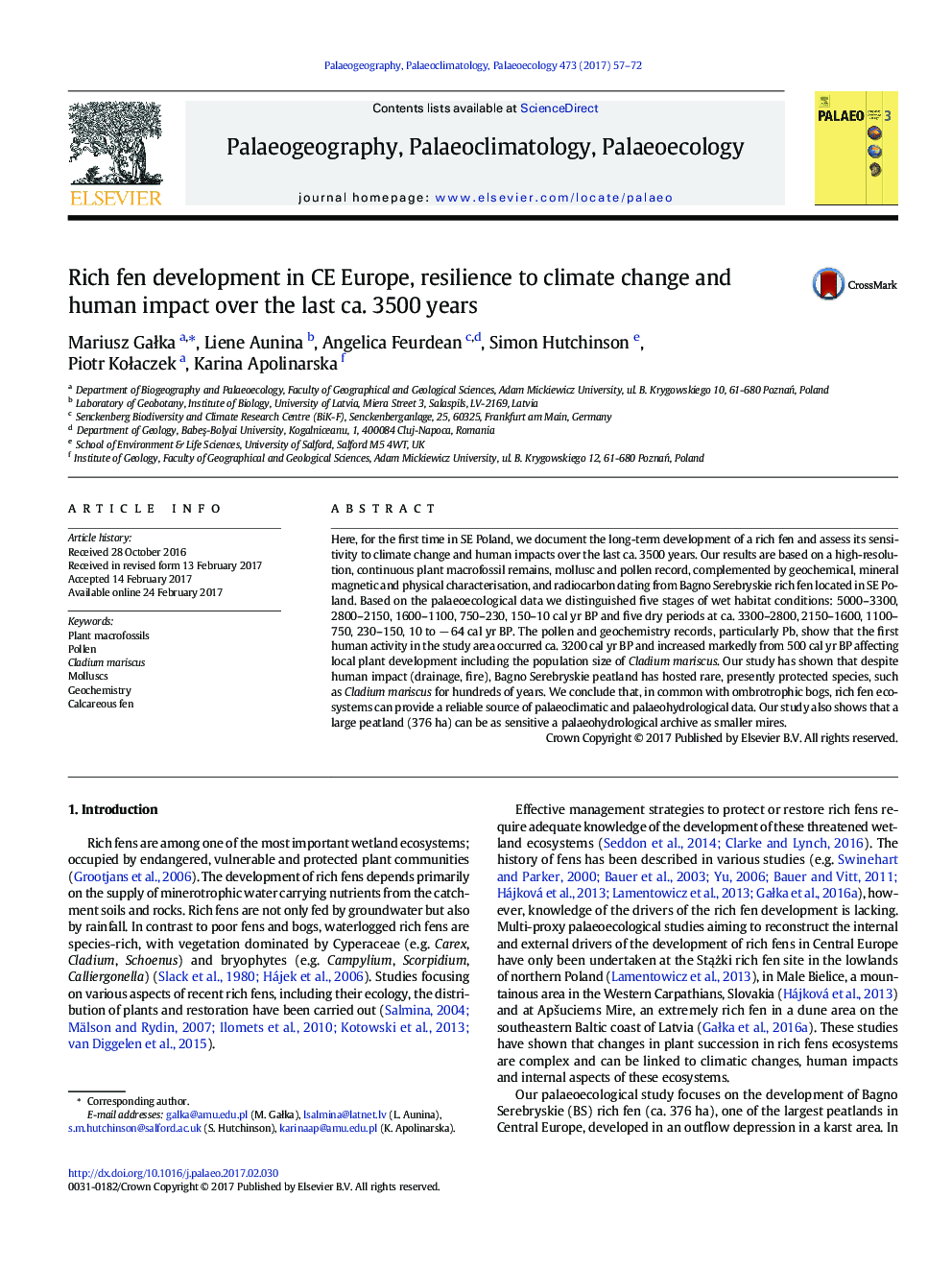| کد مقاله | کد نشریه | سال انتشار | مقاله انگلیسی | نسخه تمام متن |
|---|---|---|---|---|
| 5755692 | 1622119 | 2017 | 16 صفحه PDF | دانلود رایگان |
عنوان انگلیسی مقاله ISI
Rich fen development in CE Europe, resilience to climate change and human impact over the last ca. 3500Â years
دانلود مقاله + سفارش ترجمه
دانلود مقاله ISI انگلیسی
رایگان برای ایرانیان
کلمات کلیدی
موضوعات مرتبط
مهندسی و علوم پایه
علوم زمین و سیارات
فرآیندهای سطح زمین
پیش نمایش صفحه اول مقاله

چکیده انگلیسی
Here, for the first time in SE Poland, we document the long-term development of a rich fen and assess its sensitivity to climate change and human impacts over the last ca. 3500 years. Our results are based on a high-resolution, continuous plant macrofossil remains, mollusc and pollen record, complemented by geochemical, mineral magnetic and physical characterisation, and radiocarbon dating from Bagno Serebryskie rich fen located in SE Poland. Based on the palaeoecological data we distinguished five stages of wet habitat conditions: 5000-3300, 2800-2150, 1600-1100, 750-230, 150-10 cal yr BP and five dry periods at ca. 3300-2800, 2150-1600, 1100-750, 230-150, 10 to â 64 cal yr BP. The pollen and geochemistry records, particularly Pb, show that the first human activity in the study area occurred ca. 3200 cal yr BP and increased markedly from 500 cal yr BP affecting local plant development including the population size of Cladium mariscus. Our study has shown that despite human impact (drainage, fire), Bagno Serebryskie peatland has hosted rare, presently protected species, such as Cladium mariscus for hundreds of years. We conclude that, in common with ombrotrophic bogs, rich fen ecosystems can provide a reliable source of palaeoclimatic and palaeohydrological data. Our study also shows that a large peatland (376 ha) can be as sensitive a palaeohydrological archive as smaller mires.
ناشر
Database: Elsevier - ScienceDirect (ساینس دایرکت)
Journal: Palaeogeography, Palaeoclimatology, Palaeoecology - Volume 473, 1 May 2017, Pages 57-72
Journal: Palaeogeography, Palaeoclimatology, Palaeoecology - Volume 473, 1 May 2017, Pages 57-72
نویسندگان
Mariusz GaÅka, Liene Aunina, Angelica Feurdean, Simon Hutchinson, Piotr KoÅaczek, Karina Apolinarska,